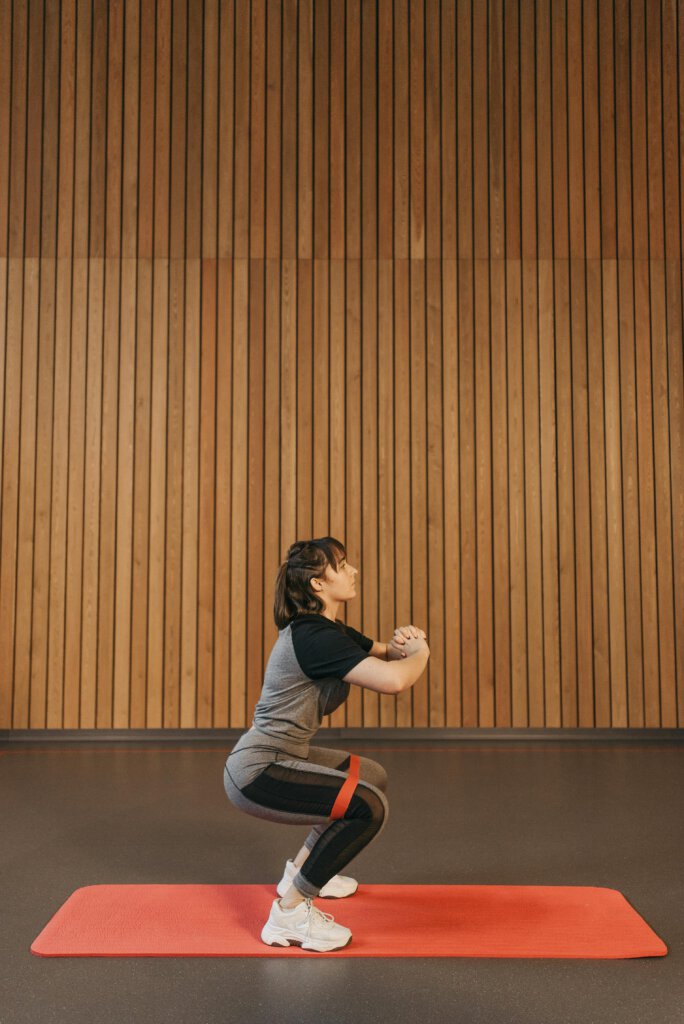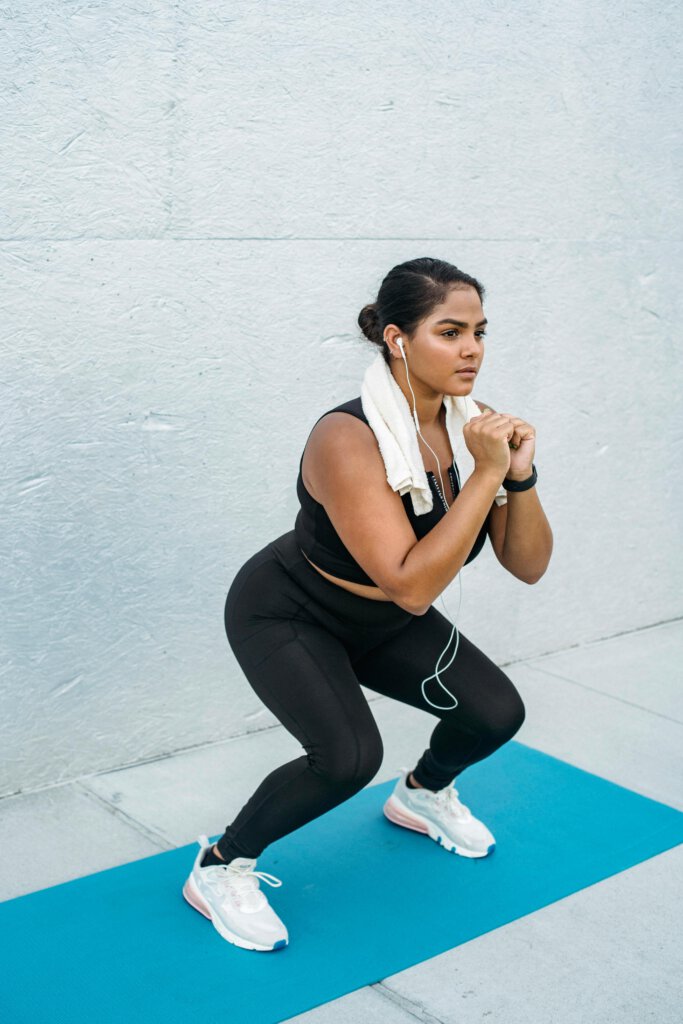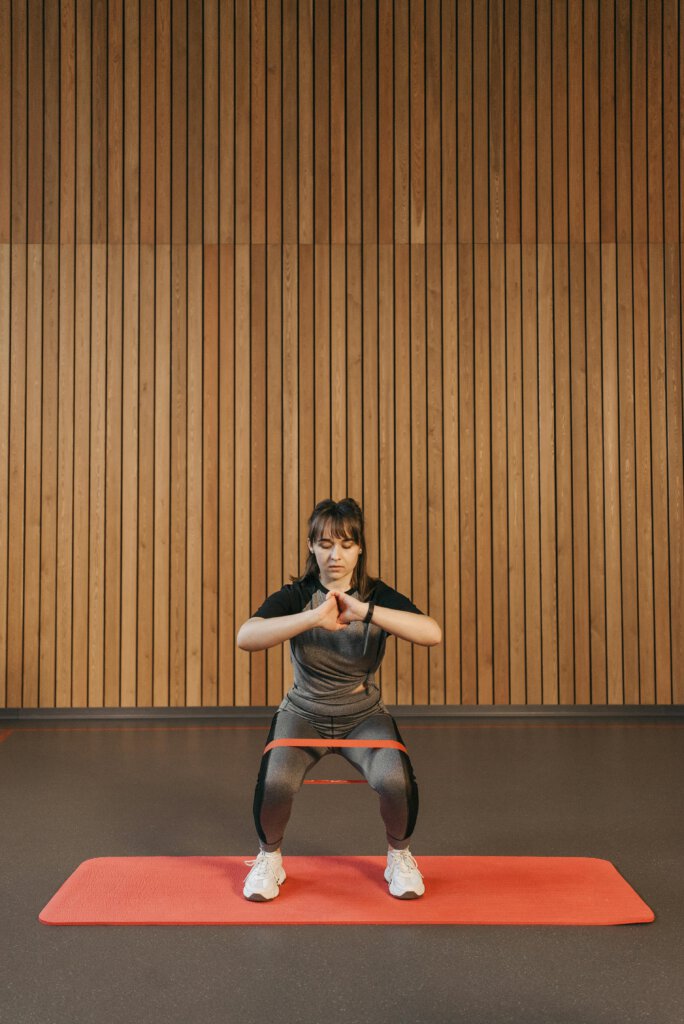Perfect bodyweight squats: beginner’s calisthenics guide
Want to build strength, improve mobility, and know how to perform the fundamental calisthenics move? Bodyweight squats are the ultimate starting point for beginners. This powerful exercise engages multiple muscle groups, boosts endurance, and lays the foundation for your advanced calisthenics journey.
Did you know that a single squat activates over 200 muscles in your body? Whether you’re new to fitness or looking to refine your form, mastering perfect bodyweight squats can transform your workout routine. This guide breaks down everything beginners need to know, from proper form to common mistakes, ensuring you squat with confidence and see results fast without getting injured.

Why bodyweight squats are essential for beginners
Bodyweight squats is the start of calisthenics leg muscle building for beginners, laying a rock-solid foundation for strength training. They’re like the bread and butter of lower body workouts, engaging multiple muscle groups while boosting balance and flexibility.
Beginners often skip squats, thinking they’re too basic, only to struggle with advanced moves like pistol squats later. We will explain why that’s a mistake and how squats build leg strength and functional fitness.
Squats activate your quads, hamstrings, and glutes, while also improving core strength. A 2018 study from the Journal of Strength and Conditioning Research found bodyweight exercises like squats enhance muscle activation and joint health, reducing injury risk https://pubmed.ncbi.nlm.nih.gov/29489726/. They prepare you for more complex calisthenics exercises by learning the proper movement.

Why squats matter
- Builds foundation: Strengthens muscles for tougher moves.
- Improves balance: Enhances coordination for daily tasks.
- Boosts flexibility: Loosens hips for better mobility.
Proper form for perfect bodyweight squats
Using the proper squat technique is crucial for beginners diving into calisthenics. Poor form, like slouching or letting knees cave, can lead to aches or injuries. This section breaks down squat form to ensure safety and maximize benefits.
To perform a perfect bodyweight squat, begin by standing with your feet shoulder-width apart, toes slightly turned out for balance. Use a yoga mat if you find that easier.
- Engage your core and keep your chest lifted as you initiate the movement by pushing your hips back, as if sitting into a chair.
- Lower your body until your thighs are at least parallel to the ground, ensuring your knees track over your toes without collapsing inward.
- Maintain a neutral spine, avoiding excessive forward lean or rounding of the back.
- Push through your heels to return to the starting position, keeping your movements controlled and fluid.
- Proper alignment and depth are key to maximizing strength gains and preventing injury. A common mistake is letting knees drift inward and focus on knee alignment over toes.
Watch this video for a detailed form tutorial:
You can also use the Fitbod App for example which can help perfect your squat form. Its form tips and video demos guide beginners to maintain core engagement and proper squat depth.
Key form tips to remember
- Stance: Feet shoulder-width, toes out 10-15 degrees.
- Depth: Aim for thighs parallel to ground.
- Spine: Keep it neutral, not rounded.
- Knees: Track over toes, not inward.
Common mistakes and how to avoid them
Beginners often mess up bodyweight squats, turning a solid exercise into a pain-inducing disaster. Common squat mistakes include shallow squats, rounded backs, or knees caving inward, which can strain joints. Here are some practical fixes to keep your calisthenics training safe and effective.
Shallow squats miss out on full muscle activation, while a rounded back stresses the spine. Mobility issues often cause these errors, so warm-up with mobility drills like hip circles. A 2020 study in Sports Medicine emphasized mobility exercises reduce injury risk by 30%, so keep that in mind.

Using a resistance stretch band can really help you with doing correct squats.
Fixes for common errors
- Shallow squats: Use a chair to gauge depth.
- Rounded back: Practice wall squats for posture.
- Knee caving: Push knees out during descent.
- No warm-up: Do 5-minute mobility drills first.
Building a beginner-friendly squat routine
Creating a squat routine for beginners can feel overwhelming, but it’s a game-changer for building lower body strength. Many newbies overdo reps, causing burnout, or skip progression, stalling gains. Use this simple calisthenics squat routine to kickstart it.
Simple routine
- Reps/Sets: Start with 3 sets of 10-12.
- Rest: 60 seconds between sets.
- Progression: Add 2 reps weekly or try pause squats.
- Mix it up: Include in a full-body workout twice weekly. Pair squats with push-ups for a full-body workout.
Gradually increase reps or add squat variations like pause squats to boost intensity.
Check out this beginner plan:
Benefits of bodyweight squats beyond strength
Bodyweight squats do more than just build leg strength, they’re a powerhouse for overall wellness. Beginners often overlook how squats improve mobility, posture, and even mental health. We explain these underrated perks, showing why squats are a must for functional fitness.
Squats enhance hip mobility, making daily tasks like sitting easier. They also improve posture by strengthening the core, countering slouched shoulders from desk jobs. Plus, the discipline of a consistent squat routine boosts confidence. It is a fact that regular exercise improves mental health, which means you just feel great after squatting :)
Hidden benefits
- Mobility: Loosens hips for better movement.
- Posture: Strengthens core for upright stance.
- Mental health: Builds discipline and confidence, feeling awesome!
- Metabolism: Boosts calorie burn even at rest.
Conclusion
Perfect bodyweight squats are a game-changer for calisthenics beginners. They build strength, enhance mobility, and set you up for more advanced moves. By focusing on proper form, avoiding common mistakes, and following a structured routine, you’ll unlock the full potential of this versatile exercise.
Ready to start squatting? Grab a spot in front of a mirror, follow the tips in this guide, watch the videos, and feel your strength soar after doing this workout a couple of times! Keep practicing and stay consistent. Also try another exercise: how to do incline push-ups for beginners.

